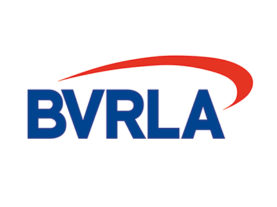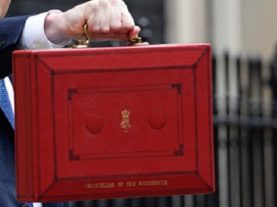The Worldwide Harmonised Light Vehicles Test Procedure (WLTP) is the consumption and emissions testing scheme introduced for all new cars from September 2018. VED and Company Car Tax (CCT) for newly registered vehicles will use CO2 figures based on the WLTP standard from 1 and 6 April 2020 respectively.
What is WLTP?
WLTP is the new testing system for cars and vans which provides comprehensive and reliable emission and MPG figures to help compare vehicles and determine what will best meet a driver’s needs. It is being phased in to replace the existing New European Driving Cycle (NEDC).
WLTP will measure a car or van’s individual CO₂ value by testing the vehicle at different average speeds (low, medium, high and extra high) and each driving phase is also tested (stopping, accelerating and braking) to reflect real life driving styles. The values obtained with WLTP are comparable worldwide, excluding China and the United States of America, whilst NEDC values are only valid in Europe.
Since its initial introduction in 2017, the CO₂ values of WLTP have been translated back to correlated NEDC values to allow for monitoring compliance against the CO₂ targets set by the European Union. In some cases the NEDC correlated CO₂ values could be up to 17% higher than existing NEDC values for comparable cars and WLTP CO₂ values are typically 20-30% higher.
To account for the impact of the higher CO₂ values HM Treasury decreased CCT rates by 2% for 2020/21, and will then increase them by 1% in 2021/22 and 2022/23. There has been no adjustment to first-year VED bands or other CO₂ linked taxes.
Why is the test changing?
Air quality standards from tail pipe emissions have been the concern of citizens and governments for a number of years. Vehicle manufacturers have been tasked with reducing pollutants that are proved to be injurious to health (carbon monoxide, hydrocarbons, nitrous oxides and particulates). Further information is available on the European Automobile Manufacturers’ Association’s WLTP webpage.
When will this happen?
WLTP testing was introduced for all new car/van models requiring a new type approval number from September 2017 and expanded for all cars and car derived vans from September 2018. WLTP was introduced for all vans from September 2019.
During a transitional period between September 2017 and September 2020, the certificate of conformity issued by the Vehicle Certification Agency will show both NEDC and WLTP CO₂ values. This is a requirement of the labelling directive to help ensure that the motor manufacturing industry can comply with the 2020 CO₂ targets.
Guidance from HMRC
For vehicles registered before 6 April:
Q1: CO2 emissions figure to use all powertrains except excepted pure electric vehicles?
HMRC: use NEDC “weighted, combined” figure where it is shown (PHEVs), otherwise “combined” [49.1]
Q2: What zero-emission mileage [ZEM] figure to use for PHEV and BEV vehicles?
HMRC: use the NEDC “electric range” field [49.2]
For vehicles registered after 6 April:
Q3: CO2 emissions figure to use all powertrains except excepted pure electric vehicles?
HMRC: use the WLTP “weighted, combined” figure where it is shown (PHEVs), otherwise “combined” [49.4]
Q4: What zero-emission mileage [ZEM] figure to use for PHEV and BEV vehicles?
HMRC: use the WLTP “Electric range (EAER)” field [49.5.2] for PHEVs, the Electric Range (EAER) figure to use is “EAER combined”. For BEVs “Electric range” field [49.5.1] is used.
Q5: For the 1 – 5 April window when V5Cs display WLTP CO2 figures and CCT rates require NEDC CO2 values what procedure will need to be followed to enter NEDC CO2 values?
HMRC Answer: From 1 April the V5C will show the WLTP CO2 rate. This figure should not be used for BiK until 6 April. The NEDC CO2 value will still be on a vehicle’s Certificate of Conformity (CoC) document and this value must be used until 5 April.
Q6: Which WLTP CO2 figure should be used for CCT rates
HMRC Answer: The figure to use is ‘combined’
Q7: If the ZEM figure is in km and needs to be converted into miles, what is the treatment of decimals?
HMRC Answer: HMRC guidance advises the customer to convert (if necessary) and then round-up the decimal figure to the next whole figure.
The guidance above still stands and it seems very likely that legislation will be changed to make it consistent with this guidance.
To give an example of this process: if a car has a ZEM of 29.6 miles on the CoC when it is converted from km and under 50 g/km CO2 which band will it be in?
HMCR: It would be rounded to 30 and fall in the 30-39 ZEM BiK range. For a car registered before 6 April it will face 12% BiK band and registered from 6 April 10%.
Q8: Are manufacturers obliged to provide leasing and rental companies with a vehicle’s Certificate of Conformity (CoC)?
HMRC Answer: The CoC should go with the vehicle as any other car specification documentation.
Q9 : Are leasing companies obliged to provide a lessee with the CoC if they request it?
HMRC Answer: That would be at the discretion of the leasing company. For the purpose of the ULEV/WLTP CCT submission the leasing companies are obliged to provide the lessee with the ZEM figure, only which is documented on the CoC.
Q10: Will HMRC be checking ZEM figures supplied against a database for accuracy?
HMRC Answer: As with any other submission to HMRC the onus is on the customer to provide the correct figure. HMRC are providing guidance to both Employers and Employees on the correct route to obtain the official ZEM figure
Do I need a Certificate of Conformity?
There have been numerous concerns raised with the BVRLA about obtaining a Certificate of Conformity (CoC) to access the zero-emission mileage (ZEM) figure.
The ZEM figure is required to confirm the CO2 emissions of Plug-in hybrid electric vehicles (PHEVs) in the post 6 April Company Car Tax (CCT) regime.
For cars registered after 6 April the ZEM figure is the Equivalent All-Electric Range (EAER) or as listed on the CoC “electric range (EAER)”. For vehicles registered before 6 April their ZEM figure is the NEDC “electric range” field. The BVRLA has been in conversation with members and HMRC to try to create as much clarity as possible.
The legislation does not require evidence, which means that there is no requirement to send HMRC a copy of the CoC, nor is there a legislative requirement to obtain the CoC.
The requirement is to provide HMRC with the ZEM figure. For the purpose of calculating CCT ZEM submissions it is up to the employer, and employee, to satisfy themselves that whatever information they provide to HMRC meets the tests in legislation. This means that the employee and employer must be satisfied that whatever they report to us is correct.
The ZEM figure should be obtained in the same way that leasing/fleet companies currently obtain their CCT data. The introduction of ZEM does not change the customer journey, it just requires one more piece of CCT information.
Members are encouraged to interrogate their current procedures for securing CCT CO2 data and ensure that they or their partners are capturing the ZEM/EAER field of data, which they can then use. For vehicles already in use, they would have received the CCT CO2 data and should engage with partners to secure the appropriate ZEM figure.
Please direct any questions to Senior Policy Advisor Thomas McLennan.
Other areas
Vehicle Data Access
There are still OEMs who are not supplying leasing companies with the WLTP CO2 data they need to accurately generate quotes. Unfortunately, if you are only receiving a “combined min” and “combined max” figures this is not enough for a 100% accurate quote. They are not for the specific vehicle being ordered and will not appear on a Certificate of Conformity or V5C.
The data for “combined min” means the “combined” CO2 value for the model with the minimum possible CO2 influencing options while the “combined max” means the “combined” CO2 value where the model has the maximum possible CO2 impacting options. These classifications are for giving the upper and lower bands of what the largest and smallest possible CO2 of that vehicle could be.
It is your commercial decision to decide how you want to use that data in a quote and communicate that variability to your customers.
Capital Allowances
We have also sought clarification as to whether WLTP CO2 figures should be used for capital allowances from 1 April or 6 April.
Certificate of Conformity
Currently, the only place where the data on the ZEM of a vehicle is held is the Certificate of Conformity (CoC) of that vehicle. The ZEM will not appear on a V5C. The BVRLA is working with DVLA to get them to add the ZEM to the V5C. However, in the short term, the CoC is the only source of data that HMRC will accept.
HMRC has confirmed that if leasing companies currently acquire the CCT data via a digital mode (a database/spreadsheet etc) then they are content for this to continue, providing the ZEM figure is the same as will appear on the CoC, unless it is in km then it must be converted to miles. The onus is on the user to submit the correct ZEM figure and whichever way they obtain the ZEM is their choice, providing they are satisfied they are submitting the official ZEM figure. If an alternative source of information is used by an HMRC customer and it later proves incorrect then responsibility lies with the customer.
CoCs are complex documents, and are often in the language of where the vehicle was tested. There is an EU directive that requires OEMs to deliver them with a vehicle and HMRC has been assured by OEMs that they are complying with this. OEMs will also be able to provide duplicate CoCs for individual vehicles where they have been lost, however there may be a cost for duplicates. Leasing companies should engage with their OEM and other partners about establishing a procedure for securing CoCs which works best for their business.
The BVRLA is engaging with other industry stakeholders to provide more resources on how to interpret CoCs as well as an easier solution for accessing their data.
Related News





